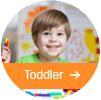How to Handle Messy Eating: Children of 1-4 years
Handle Messy Eating – Almost all younger children are messy eaters – as almost all parents have discovered with their first child!
Inevitably, in the earlier months and years, you are likely to spend a fair bit of meal times mopping up after them. However, messy eating isn’t something that should be tolerated ad infinitum. Most children around the age of 3-4 should be capable of eating in a relatively tidy fashion.
Early months and years – Handle Messy Eating
Most babies and toddlers will quickly pick up the skills to feed themselves and once they do so, the mess will begin.
To begin with, children are feeding themselves and at the same time, learning about controlling their body including their hands and fingers. There will be plenty of mistakes and accidents both in how they manipulate their hands and how clumsy they’re likely to be with cutlery.
In most cases, babies and younger toddlers will quickly master those skills but they’ll also be only too aware of the additional power this gives them to influence their surrounding environment – often simply for their own amusement. A very common symptom of this is the baby who quickly feeds itself to satisfy its hunger but who then moves on to throwing food around their bowl and chair etc. Seeing the adult disapproving and clearing up is a source of endless hilarity for many babies and toddlers!
When change is necessary
As with so many areas of raising children, there are no firm rules on this one. Some toddlers quickly find messy eating becomes boring and will move quickly and spontaneously to feeding themselves sensibly, so that they can get back to playing.
Other children may require more parental help and encouragement to reach that stage. That usually involves indicating mild disapproval if they’re deliberately throwing food around or using it as a form of toy to be played with. Parents need to keep in mind that if a toddler sees them finding their messy eating to be hilarious, then they’re very likely to continue it.
In general terms, watching your child eat can be a useful guide. If they’re more interested in throwing it around or playing with it rather than eating, then it should probably be removed. Try to keep some margin for tolerance here for much younger children, some of whom may find food to be fascinating to begin with and they’ll want to explore it before thinking about eating it.
Ages
Acknowledging that children may develop at different rates, most babies of around 6-9 months should be capable of feeding themselves via their fingers (with help).
At about 9-18 months, they should be able to handle a simple spoon to eat with, though expect a lot of fingers too and plenty of messy eating errors! This can be encouraged by parents but many babies will be pushing for more independence and they may spontaneously want to emulate what they’ve seen others do with cutlery.
By the time they’ve reached 18-24 months, they should be handling a spoon more or less successfully most of the time though errors will still happen and they might also still be inclined to use fingers and hands.
Knives and forks can be more of a challenge. The hand-eye coordination required is greater than with a spoon but most children by the age of 3 should be experimenting and by 4-5 they should be able to basically handle a knife and fork albeit with again, fairly numerous errors.
Most children by 6-7 should be capable of handling a spoon, fork and knife with more or less correct skills. You may still see odd errors at this age though, such as trying to use the blunt side of a knife blade to cut with.
How to help
It is exceptionally difficult to lay down a programme because every child is different and some of these things may vary depending upon a family’s cultural practices.
Almost all care providers though will need to make the shift from amusement with messy eating to indicating disapproval. Plenty of coaching in the cutlery handling techniques used in the family will also help children to learn the basic skills faster. Try to avoid showing anger or frustration though, use praise instead to reward the child’s success.
Basic commonsense also applies. At younger ages, wearing good clothes as you try to teach your baby to eat is asking for trouble!
Problems
Very rarely, some children struggle to master tidy correct eating using cutlery. This may or may not indicate conditions such as dyspraxia.
If by the age of 2-3 for the spoon or 3-5 for a knife and fork, a child has made little or no progress in mastering the use of cutlery, it might be prudent to ask your doctor for advice and a possible check-up for the child.













